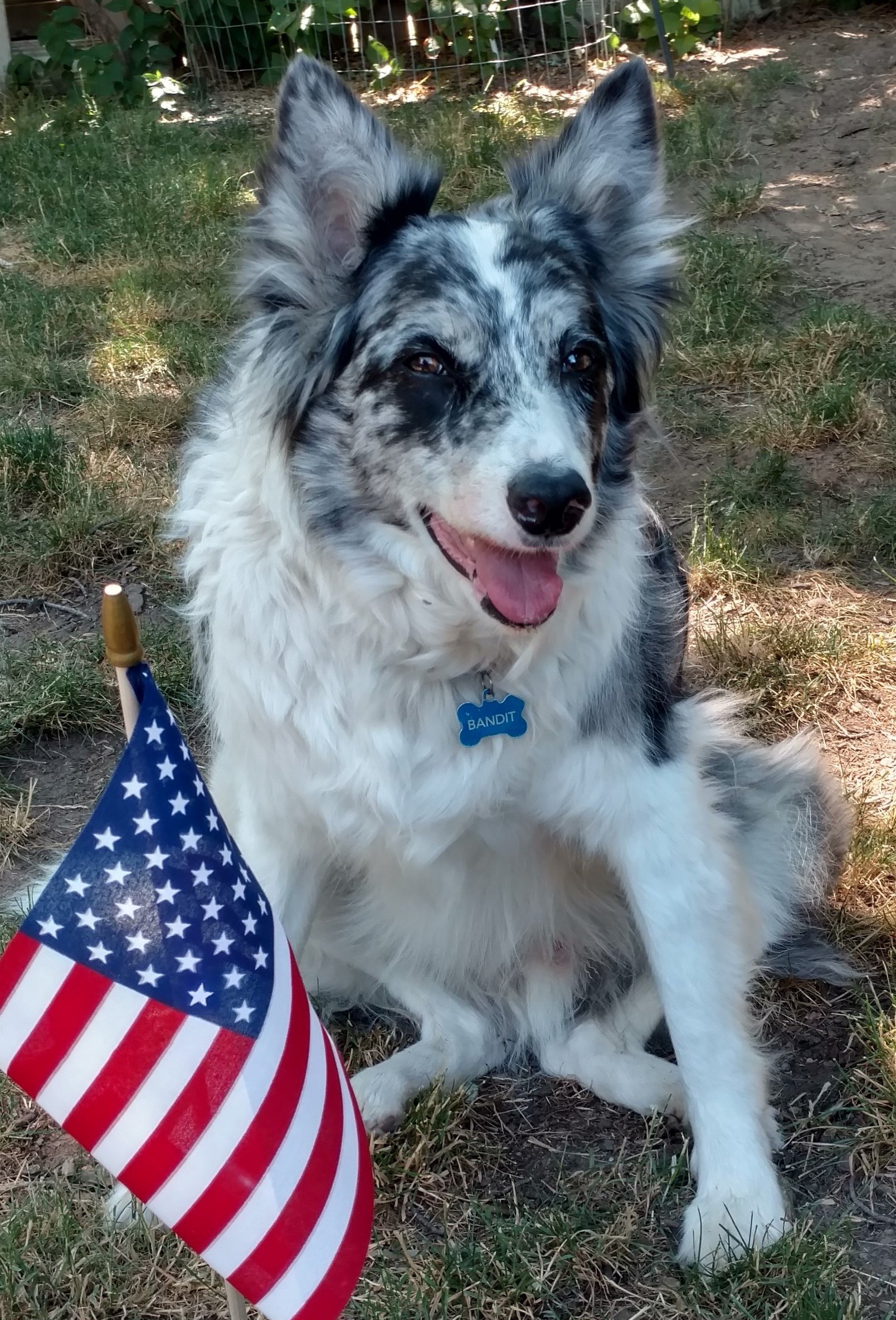
Folks involved in animal rescue know all about Breed Specific Legislation (BSL), but many average dog owners don’t understand what it really means when communities adopt laws banning dogs of specific breed or physical characteristics.
Then a story like this one hits the front page: retired police officer James Sak is being forced to get rid of his service dog Snickers, just because the five-year-old is a Pit bull-mix.
Sak was a police officer in Chicago for 32 years, almost half that time as a tactical officer. Now retired, he needs the dog for assistance after he suffered a debilitating stroke that left him with no feeling on the right side of his body. Sak told the Chicago Sun-Times, “I have spasms on my right side where the leg gives out whenever I get upset or try to do too much. When Snickers sees that my hand is moving, he sits down by me right away and waits for me to tell him what to do. Usually, he goes to get my wife so she can help me get back in the chair. Without him, I feel lost.”
Last month, Sak moved to the town of Aurelia, Iowa to be near his ailing mother-in-law. Soon after, he and his wife Peggy were called to a city council meeting and told they needed to get rid of Snickers the next day or the dog could be seized and euthanized.
The dog was immediately moved to a boarding facility outside of the town limits, and Sak is without his service companion. That means his 87-year-old mother in law is now taking care of him.
The story has obviously captured the hearts of Americans, who are outraged – as they should be. But this isn’t an isolated case. Breed Specific Legislation has been enacted in communities large and small across the nation, essentially outlawing breeds including the American Staffordshire Terrier, American Pit Bull Terrier, Staffordshire Bull Terrier, and the American Bulldog – or more importantly, any dog that looks likes one of these breeds. People just like you and me have had to surrender their family pets – or move to a new city – because our dogs have broad heads or short tails or otherwise look like a “pit bull.”
Until now, have you paid attention to that?
It’s understandable that communities would be cautious about allowing people to harbor dangerous dogs. The problem is that identifying a dog as dangerous soley by breed or physical characterstics alone doesn’t necessarily identify its behavior. And as Bill Bruce, Calgary’s Director of Animal and By-Law Services, says so eloquently in this video, BSL “attempts to deal with the dog, not the problem; the problem is the owner” and “when it’s that broad brushed you catch the wrong fish in the net” by polarizing a community rather than bringing it together to solve the actual problem.
In fact, it’s a myth that you can identify a dog’s breed without an actual pedigree. Despite our desire for purebred dogs, according to the National Canine Research Council (NCRC):
“Recent research has confirmed that it is impossible to breed label dogs of unknown history and genetics solely on the basis of their appearance. And at least half of the dogs in the United States are mixed breed dogs! Nevertheless, animal controls and shelter workers continue to assign single breed descriptors to mixed breed dogs.”
So we can’t really tell what breed a dog is simply by looking at it; without a breed pedigree, a mutt is still a mutt, no matter how big his head is.
That’s not to minimize the number of dog bites that don’t result in fatalities. A dog bite hurts – a lot. But there isn’t any accurate way to tally what kind of dogs make those bites because there is no national system in the United States for compiling the information. That’s right. Every community keeps a record their own way and in fact, some communities don’t even keep a records of dog bites at all.
And what is a bite, anyway? Every community has a different definition. Does it mean the contact breaks the skin or doesn’t break the skin? Requires medical attention or doesn’t require medical attention? In some cases, simply having contact with dog saliva is a bite; in other cases, a bite needs to draw blood and require a trip to the doctor.
So let’s sum up: there’s no way to clearly idenify a dog breed without a pedigree for proof. There are no actual statistics on dog bites or what kinds of dogs cause those bites. There isn’t even a uniform definition of what constitutes a bite.
And yet, communities all across America have passed legistlation that results in dogs being banned, outlawed and in many cases confiscated and euthanized.
And in Aurelia, Iowa, it resulted in one man having his service dog taken away, simply because someone doesn’t like the way it looks.
Do you care about Breed Specific Legislation now?
The Animal Farm Foundation has filed a lawsuit against the city of Aurelia, Iowa, asserting that Snickers is a service dog and medically required to reside with Sak, and is legally allowed to do so under the Americans with Disabilities Act. (You can read the motion here.) Stay tuned; hopefully Snickers will be back with Sak soon. And hopefully, the story will open the eyes of dog owners to Breed Specific Legislation in their communities. Today, pit bulls. Tomorrow … your dog?















